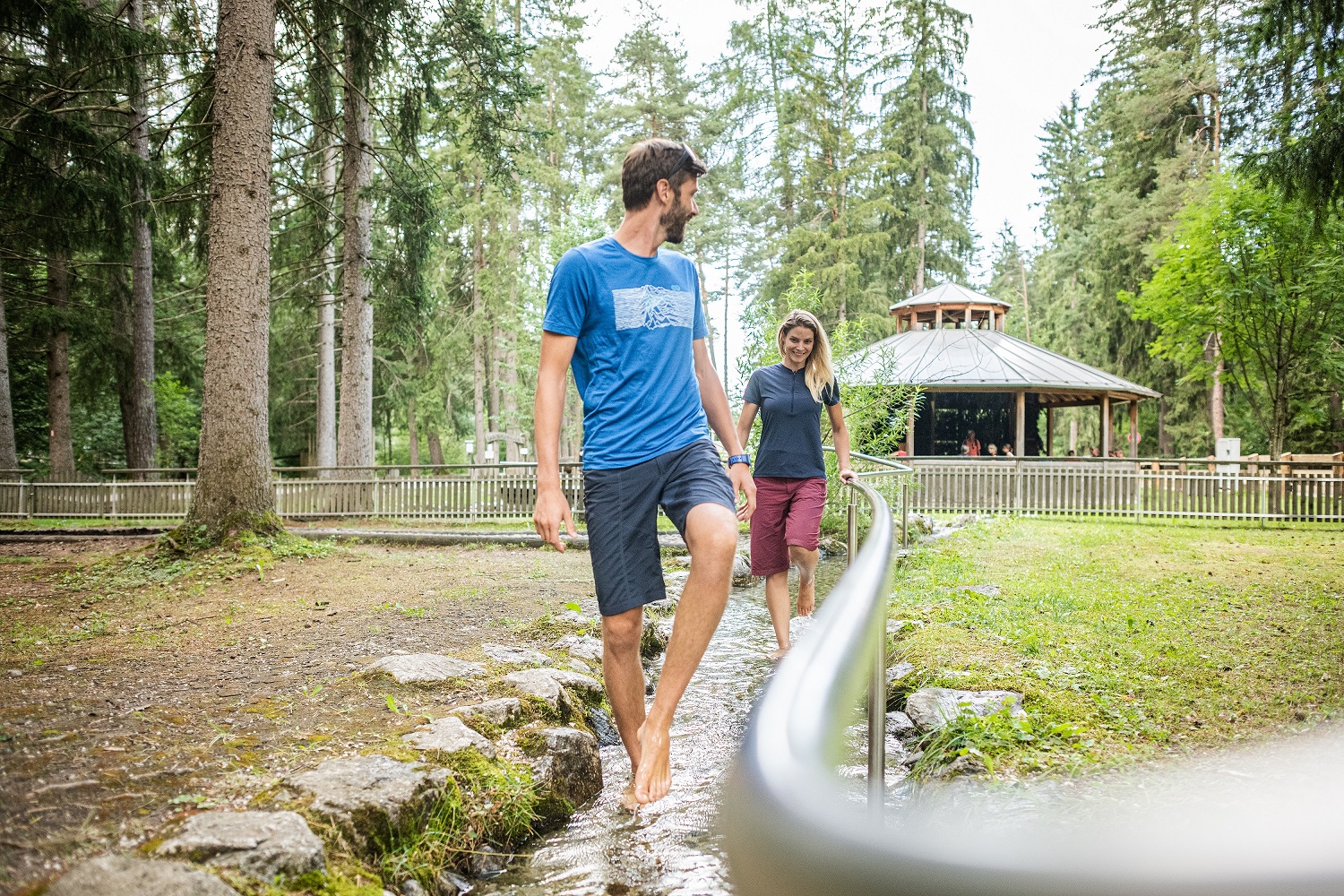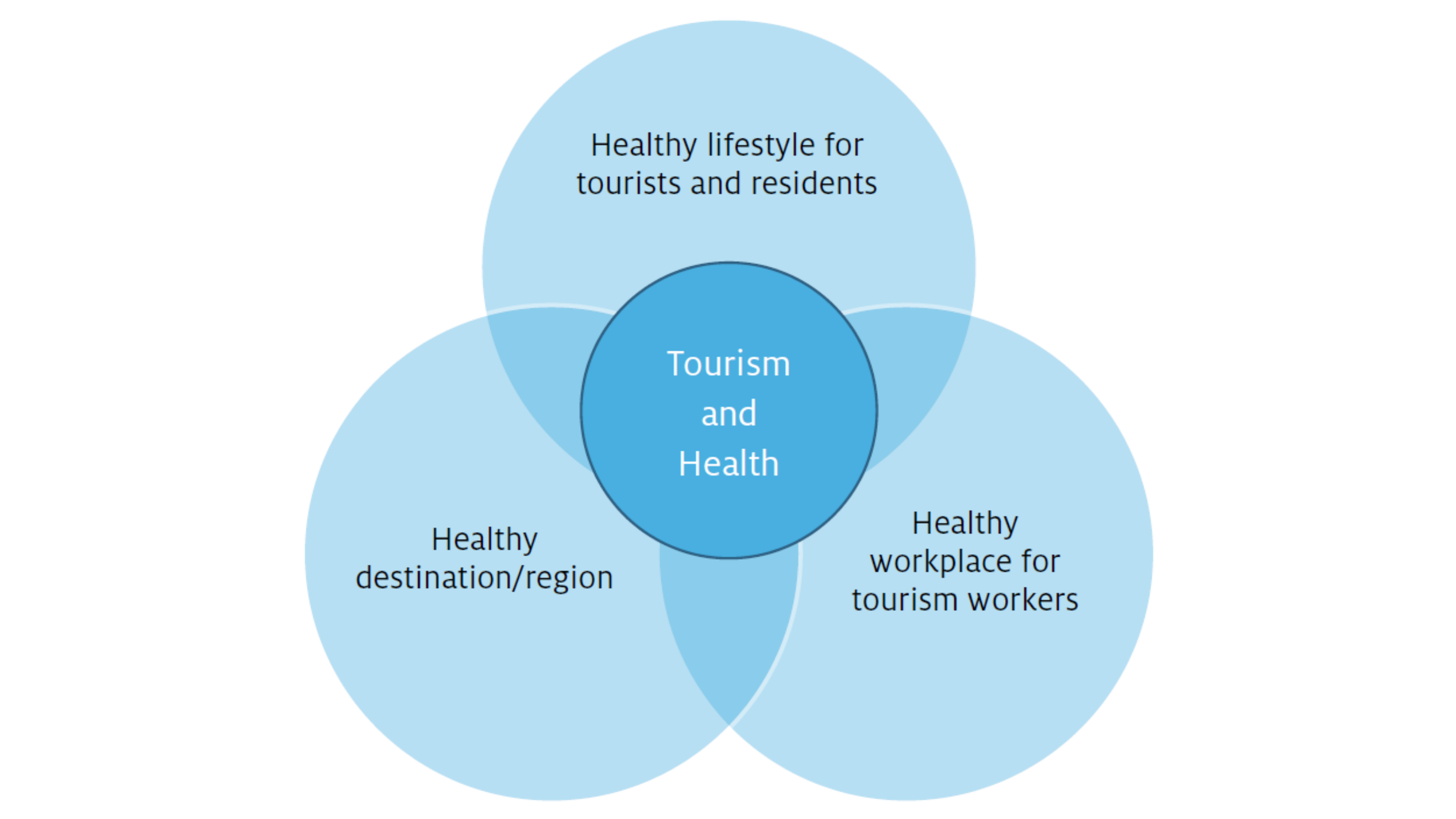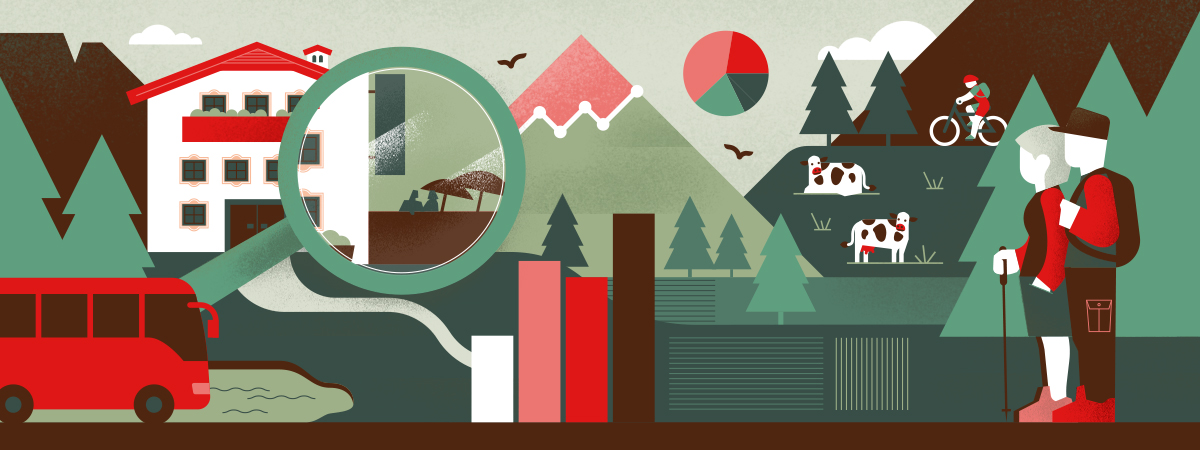PUBLIC HEALTH
Public health and tourism: exploring the interface
Our daily practices affect human health, both immediately and in the long term. Health problems are often caused by problems in our environment. The necessary countermeasures for both are often almost identical. But: the health lens is particularly appropriate because it states the impacts of an unsustainable way of living in terms of human health (rather than a more abstract or remote concept like resource depletion or loss of biodiversity). It thus helps us to see that there is a human side to sustainability, humans are being affected. Sustainability is thus not only an environmental issue, but also a social justice issue. This is why the Observatory for Sustainable Tourism in South Tyrol will deal in depth with the aspect of public health and the link to sustainability.

Following the definition of the WHO (1946), “health is a state of complete physical, mental and social well-being”. Being considered “one of the fundamental rights of every human being” (Ibid.), the topic of health has received special attention in recent years, not least because of the Covid-19 pandemic. In this context, several definitions of public health have emerged over the years, most of which share the common focus on the health of an entire population as well as the collective and organized efforts to protect and improve it (see, for instance, Institute of Medicine, 1988). There are many factors which, combined, affect the health of individuals and communities. These “determinants of health” include the broader social, economic, cultural and physical environment in which a person is embedded, their living and working conditions, their social, family and community networks, their individual behaviour and lifestyles as well as innate individual traits and characteristics (Dahlgren & Whitehead, 1993).
Healthy lifestyles, workplaces and destinations
Based on these determinants, several points of intersection between tourism and public health can be identified (see Figure below) which are linked to different target groups, such as tourists, locals, employees, employers and the destination as such. Typical examples are wellness and outdoor tourism, which have a positive impact on the visitors’ well-being while also promoting healthy lifestyles. Moreover, the interaction and exchange between tourists and locals allows for positive emotional experiences, which can increase well-being and health on both sides. However, tourism can also have negative impacts on locals, for instance by causing stress due to congested streets and overcrowded cities or by putting pressure on the health care system during high seasons. Another aspect frequently overlooked is the physical and mental stress to which employees in the tourism industry can be exposed, due to specific working conditions not uncommon in the industry. Creating a healthy workplace is thus essential to protect and promote the health of employees. More generally, an intact natural environment constitutes a prerequisite for the health of all target groups and a healthy destination. This makes environmental sustainability a key goal also from a public health perspective.

Covid-19 and public health: vacation styles of cautious and adventurous guests
Based on the guest survey mentioned in the previous section, some important dimensions to analyse health and hygiene during the Covid-19 crisis were investigated. Using Principal Component Analysis (PCA), it was possible to group items from the questionnaire according to their reciprocal affinity and identify latent dimensions to better describe the vacation styles during Covid-19. This study has been accepted for publication recently on the open access journal Sustainability. Survey items grouped with the PCA included the main questions about hygiene, travel behaviour and host-guest relationships.
The following two dimensions were identified to describe the activities on site: isolation, including the avoidance of contact with other locals, with guests and the desire to spend the holiday time in the hotel; cautious exploration, including the practice of outdoor activities on site, while still avoiding crowded places and public transport. The PCA analysis revealed also an additional latent factor describing the attitudes towards the accommodation facilities: information and communication needs and requests, both to self-check the own health status, to collect evidence on the situation of the Covid-19 cases on site and, ultimately, on the safety of on-site activities; the second latent dimension relates to hygiene requirements to hotels, including innovative hygiene systems; finally skepticism as an individual attitude towards other guests. These latent factors were used as descriptors of two clusters of tourists, generated through cluster analysis: the cautious guests and the carefully adventurous guests.
The cluster of adventurous guests refers mostly to international guests, especially Germans, that are seeking for less additional data or information on site than cautious guests, and are much less skeptical towards other guests. They tend to be less isolated and to practice more outdoor activities. Conversely, the cautious guests are mostly the domestic (Italian) ones, seeking for more isolation and trying to collect information about on-site conditions, and showing higher levels of skepsis towards other guests. In sum, this study seems to suggest that the more international the tourist during the pandemic, the more risk-tolerant. This hypothesis should be further investigated, together with the latent dimensions of health related to tourism.

